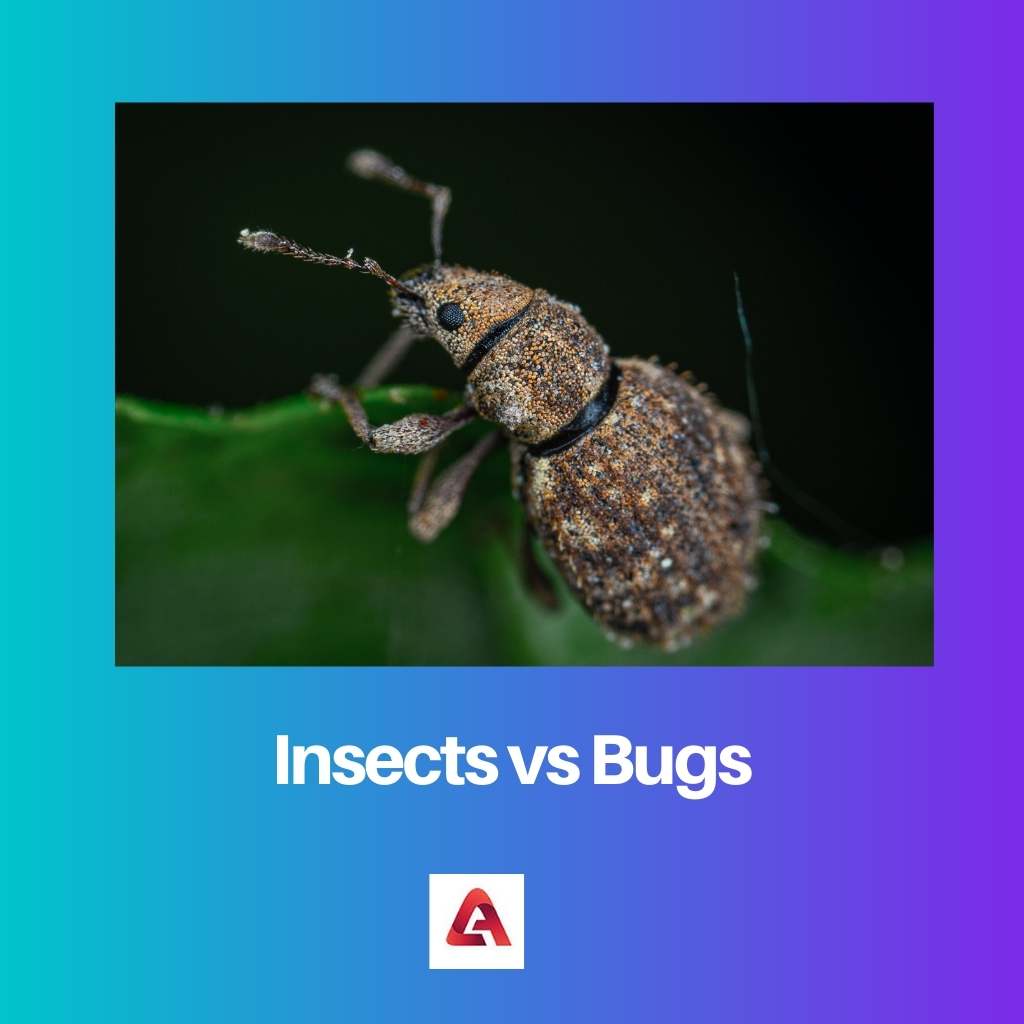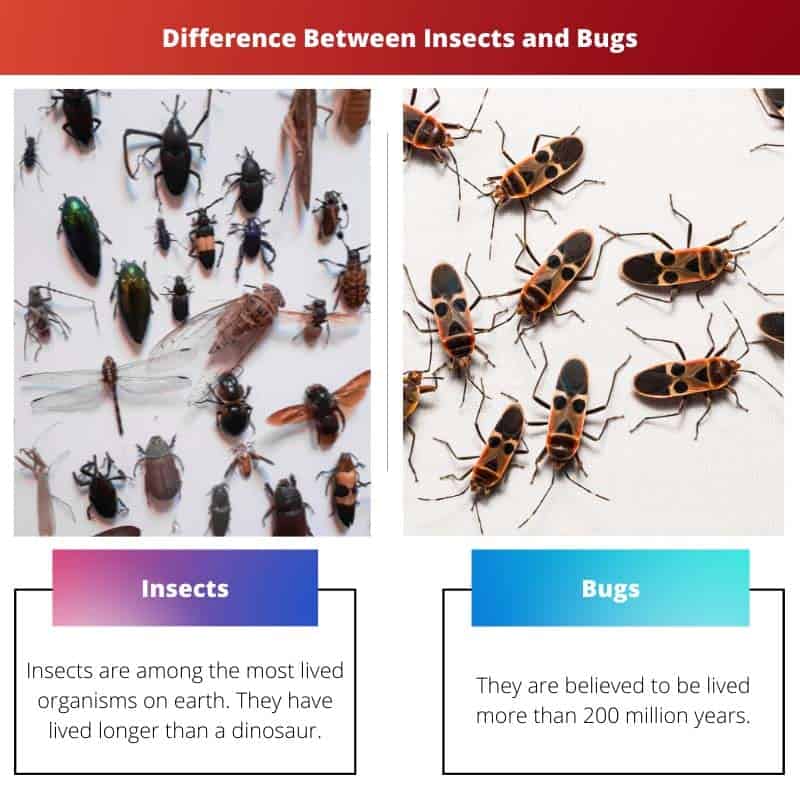Several organisms on earth might look similar but are different from each other. Insects and bugs are examples of these organisms; they have several similarities and, therefore, can be used interchangeably by arthropods or anyone.
To avoid misunderstandings, it is important to understand how they can be differentiated. They can be differentiated on the basis of their anatomical differences.
Key Takeaways
- All bugs are insects, but not all insects are bugs.
- Bugs belong to the Hemiptera order and possess specialized mouthparts for piercing and sucking.
- Insects have a wider variety of mouthparts, such as biting, chewing, or lapping.
Insects vs Bugs
Insects are a group of arthropods that belong to several orders and have mouthparts for sucking, chewing, and sponging. They have wings and a large reproductive capacity. Bugs are specific types of insects, arachnids, and myriapods that belong to the Hemiptera order and have mouthparts for sucking.

Most of them are found in terrestrial habitats. Their body part consists of the head, thorax, and abdomen. They perform the metamorphosis process completely.
They don’t perform complete metamorphosis. Their life cycle is divided into three stages: egg, larva, nymph, and adult. They have two pairs of wings.
Comparison Table
| Parameters of Comparison | Insects | Bugs |
|---|---|---|
| Significance | Group of arthropods. | Certain types of insects |
| Scientific Classification | Several orders | Order of Hemiptera |
| Mouthparts | Sucking, sponging, chewing. | Sucking |
| Diet | Solid and liquid both | Liquid diet |
| Metamorphosis | Complete | Incomplete |
What are Insects?
Insects are among the most lived organisms on earth. They have lived longer than a dinosaur. They have changed over time a little bit. They are also related to crabs, spiders, scorpions, etc.
- Wings: wings on their body have helped them to move from one place to another. This also makes them run for their life easier.
- Adaptations: as mentioned above, they have lived longer than dinosaurs, and this is only possible as they have changed themselves and adapted to the environment. Their physical body has changed a lot during these years.
- Diet: they can live by eating anything literally. This makes their life easier. They don’t need any particular food for survival.
- Reproduction: they have a large reproductive capacity, they have lots of babies, and therefore there are more insects on earth.

What are Bugs?
The following are the main types of bugs:
- Arachnids: they can be recognized by the number of their legs. If a bug has eight legs with no wings, it is definitely an arachnid. They can be spiders, scorpions, harvestmen, ticks, etc. they keep their shape as they don’t undergo metamorphosis.
- Myriapods do not have wings and several body segments with a pair of legs. Examples can be centipedes, millipedes, etc.
- Insects: they have three major segments, the head, the thorax, and the abdomen, along with six legs. Most of them perform metamorphosis, and examples of them can be flies, fleas, butterflies, moths, etc.
Following are some interesting facts about different types of bugs:
- Fruit flies were the first organisms that were sent to space.
- Dragonflies are among the most lived organisms on the earth. They are believed to be lived more than 200 million years.
- Caterpillars have more than 10 eyes.
They belong to the Hemiptera, and four suborders of it are, Auchenorrhyncha, Heteroptera, Coleorrhynca, and Sternorrhyncha.

Main Differences Between Insects and Bugs
- They have different diets; this is maybe because of their different mouthparts. Insects have solid and liquid types of diets. They eat plant and animal material, whereas bugs have single mouthparts, which is why they can only have a liquid diet (except one or two bugs that can eat other insects), and most of them feed on plants.
- If observed completely, the difference between their wings can be seen. The wings of bugs are different from insects as the front wings of bugs are different from their hind wings. Their front wings are thick, while hind wings are thin and clear, whereas both pairs of wings are thin and coloured or even clear in the case of insects.




